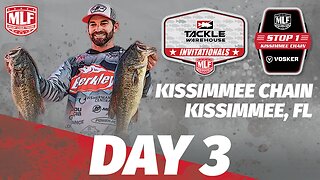Premium Only Content

OP2408-09-6 After Action Report
OP2408-09-6 After Action Report
Transcript:
OP2408-09-6
Battalion intelligence staff for 2nd Battalion, Chernarus 24th Separate Light Mountain rifle Brigade, through reports from local friendly agents based in Tarnow and Borek, uncovered massive enemy movement by the separatists south to the abandoned village of Lembork in Livonia.
Taking data from electronic intercepts including text messages and tapped cell phone calls, intelligence staff discovered that the separatists were pushing to the south through Lembork to capture the road intersection at Wrzeszcz. Here, the separatists could then strike at will to the west and roll up the road system, thereby blocking any routes of counterattacks.
Battalion operations staff assembled a light infantry task force consisting of four light rifle squads, two tanks, and one BRDM scout car, all of which were dispatched quickly to the village of Lembork.
The task force main task was to intercept enemy forces as they march south to Wrzeszcz via Lembork, but operation staff ordered the task force to make its stand at Lembork.
The Tactical plan for defense of Lembork was for the two T-72 tanks to advance along the main north road to cover the main intersection, while 2nd Squad, 3rd Squad, and 4th Squad were ordered to occupy the village itself. Command Squad, along with the scout car, were positioned on the southern ridge overlooking the village, to direct the battle.
On arrival at Lembork, enemy technicals were present, and were attacked by task force's infantry, and destroyed. Commander ordered Tank 1 and Tank 2 to redeploy from the northern road to positions overlooking the village, to engage both enemy infantry and inbound enemy vehicles.
Just before the start of the operation, intelligence staff discovered that the great bulk of forces deployed by the enemy to attack the village, were Russian interior ministry special operations teams. While friendly forces deployed in town effectively stopped the infiltration of enemy forces, they had a difficult time with enemy special operations teams.
At the same time the task force deployed and effectively dealt with both enemy attacks coming from the north and the northwest, and enemy vehicle attacks coming from the west road the north road, and overland. Although later field counts put enemy drone activity at three, later reports on the battle indicated the enemy drone count was much, much higher.
As enemy counterattacks into Lembork intensified, friendly casualties mounted. This was, despite well placed friendly armor, but for the casualties, effectively engaged the enemy.
Early in the engagement, Commander was killed, and Command Squad was wiped out. Command of the task force fell to 2nd Squad, which ordered the task force to retreat from Lembork. By the time the orders to retreat were received, enemy attacks had essentially stopped, allowing the remnants of the task force to pull back to a rally point three km to the southwest.
Casualties were catastrophic. Only 2nd Squad survived. BRDM scout car was destroyed. None of the tanks -- neither the original two tanks of the task force nor the reinforcing T-55 tank -- were destroyed.
Field counts of enemy losses included six technicals, four drones, three T-34 tanks, and two BMPs.
In the post-operation assessment by intelligence staff, it was determined that the operation that stopped separatists from taking over the village of Lembork, and then from moving further south, was a success, but the cost was high. The task force did not have artillery fire support available to it, nor did it have anti-aircraft gun support, which could have conceivably tempered the damage done by enemy drones.
Since Livonia is an operational backwater, drones would not be available to tactical commanders, until sufficient numbers of both drones and operators were made available.
In subsequent operations in Livonia, high casualty rates can be expected for the foreseeable future until task forces are provided with sufficient means to counter those threats. However, it should be noted that the task force's infantry were simply not prepared to fight off attacks by Russian Special Forces, so massive losses were inevitable.
-
 12:03
12:03
Space Ice
10 hours agoSteven Seagal's China Salesman - Mike Tyson Knocks Him Out - Worst Movie Ever
20.3K14 -
 11:37
11:37
Degenerate Jay
10 hours ago $2.39 earnedJames Bond Needs Quality Over Quantity From Amazon
20.7K2 -
 15:23
15:23
Misha Petrov
10 hours agoTrad Wives & Girl Bosses Go to WAR!
27.6K33 -
 2:03:11
2:03:11
TheDozenPodcast
8 hours agoFootball villain fighting the state: Joey Barton
26.2K1 -
 LIVE
LIVE
Scottish Viking Gaming
11 hours ago💚Rumble :|: Sunday Funday :|: Smash the Blerps and Vape the Terpes
538 watching -
 1:45:00
1:45:00
RG_GerkClan
13 hours ago🔴LIVE Sunday Special - It's Time for World Domination - Civilization VII - Gerk Clan
71.9K27 -
 LIVE
LIVE
Major League Fishing
4 days agoLIVE Tackle Warehouse Invitationals, Stop 1, Day 3
148 watching -
 23:34
23:34
marcushouse
14 hours ago $15.61 earnedBREAKING: Starship Launch IMMINENT – But What’s This SURPRISE Flight 9 Plan?! 🚀🔥
113K11 -
 8:43
8:43
Film Threat
1 day agoTHE MONKEY | Film Threat Reviews
102K3 -
 15:55
15:55
TSPLY
1 day agoThe Media Is Very Afraid Of FBI Director Kash Patel
84.2K62